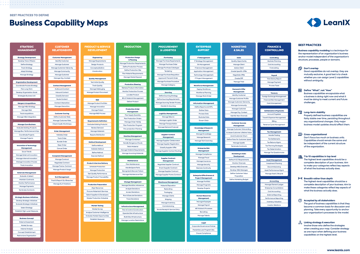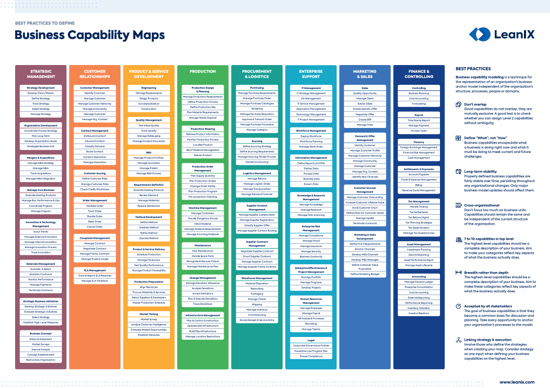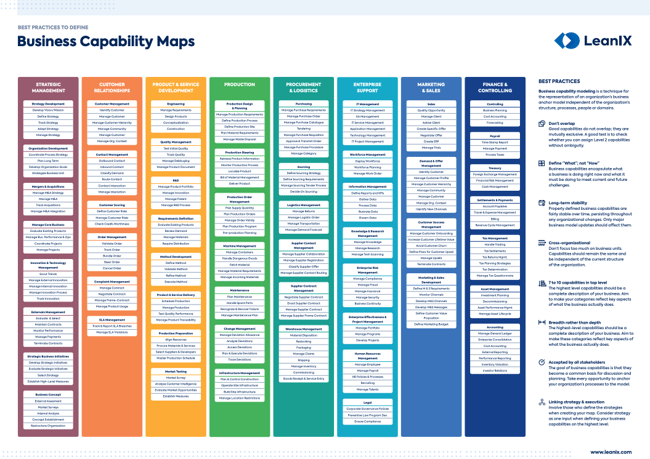Introduction
A business architect is an important position within an organization, as it bridges the gap between technology and business at its most foundational level. As businesses have to continually adapt to changing IT landscapes, business architects have a vital role in linking business strategy with the reorganization and restructuring of both business and IT processes, among various other responsibilities.
While they may have some overlap with other IT architects, the role of a business architect does differ from enterprise architects, solution architects, or technical architects. Business architects play a vital role in business transformation.
Who is a business architect?
A business architect is a strategic, senior role responsible for business transformation and overseeing critical deliverables; such as business capability models, business capabilities, and value streams. A business architect’s main responsibility is leading the architecture of new organizations or re-architecting aspects of existing ones.
A business architect will take a leadership role in the strategy and development of holistic, multidimensional business architecture to achieve an organization’s goals and solutions.
Role
The role of business architects is diverse, but their main intention is to align strategic objectives and tactical demands. Their responsibilities also include (but are not limited to) operating and business model analysis, synergizing with other business entities, developing capability maps and other artifacts, and assisting in the technology enablement of core capabilities and value streams.
Business architects will often work in conjunction with enterprise and technical architects to oversee and strategize business capabilities.
Day-to-day job
The day-to-day role of a business architect will depend heavily on the current state of an enterprise’s business architecture, and what deliverables they are required to produce.
However, overall the daily work of a business architect will encompass the development of core entities, new models or views, as well as their ongoing upkeep and upgrades. They will also be required to participate in meetings and plan ongoing strategic developments.
Reporting on various aspects of business architecture, including management reporting, and operational reporting of areas of relevance is also an important part of the role.
Common myths
- "Business Architecture is complicated"
A common misconception about business architects and business architecture is that it is complicated. Building foundational business architecture is a straightforward discipline, and successful business architects will know exactly how to navigate basic foundational principles with methodically driven solutions.
- "Businesses don't need business architects"
Another business architect myth is that businesses don’t need business architecture. Everyone in an organization sees the business from their own perspective, and business architects provide a cohesive overview of every challenge, often highlighting issues that are hidden from other individuals and departments.

Skills & qualifications
To transition into a successful business architect, there are certain key skills and qualifications you should seek to acquire. Business architects will tend to come from a background of consultancy or business analysis–but others come to the role through solutions or enterprise architecture.
Skills
Not only do business architects need certain hard skills such as experience and qualifications, but soft skills are also required. Business architect skills include:
- Experience with business process modeling, enterprise architecture, and associated tools.
- Ability to visualize growth and build high-level models for future analysis and maturing the current business architecture.
- Ability to partner with stakeholders to document and communicate values generated from the new capabilities and processes.
- Strong interpersonal skills and communication skills.
- Ability to translate complex subjects into actionable recommendations.
- Program/project management skills and the ability to set clear goals to get desired results.
Qualifications
Desired qualifications for a business architect include:
- Bachelor’s Degree or equivalent. Ideally, majors include Physics, Math, Computer Science, or Information Technology Management.
- Many years (6+) in senior Business Analysis, Business Architecture, Solutions Architecture roles in Purchasing, Supply Chain, and/or Logistics System areas.
- Experience in modeling business processes by using various tools and techniques (e.g. UML).
- Experience with enterprise architecture modeling tools.
Some of the current jobs postings and descriptions can be found on typical job posting sites:
Responsibilities & deliverables
Responsibilities
Responsibilities for business architects will vary depending on what deliverables are required by an organization. However, the main responsibilities of a business architect can be narrowed down into a handful of key areas.
Firstly, business architects will be required to make assessments for areas of improvement and make the changes necessary to carry out strategy or reshape the business. They will also be responsible for map making, and essentially building the business architecture. This includes creating and maintaining the knowledge base and connecting it to other domains such as processes and system applications.
Then the business architect will have to manage the practice within an organization as it matures. This means formalizing the supporting infrastructure, training, methodology, governance, and tools.
Deliverables
Business architecture deliverables will tend to change based on the audience, context, and use case.
- Business Architecture Business Case: The business case provides the more in-depth qualitative and quantitative benefits of business architecture
- Business Architecture Framework: A business architecture framework is an encapsulation of scope, depth, and range of activities, outcomes, and deliverables.
- Business Capabilities Map: A multi-level decomposition of what your business does.
- Value Streams: End-to-end flows aimed at delivering value to a stakeholder.
- Process Maps: More detailed maps linked to the Value Streams.
- Systems, IT services, and Applications: An inventory of the IT landscape to juxtapose against capabilities and value streams.
- Business Information Models: An inventory of the business landscape.
- Org Context: Implementation of the capabilities map and value streams.
- Lenses, Views, Reports: Adapting, updating, and analyzing.



/Guide_BC_WhitePaper_Resource_Page_Thumbnail.png?width=400&height=283&name=Guide_BC_WhitePaper_Resource_Page_Thumbnail.png)
/ea-success-kit-cover.png?width=400&height=283&name=ea-success-kit-cover.png)
/ea-success-kit-cover.png?width=260&height=171&name=ea-success-kit-cover.png)

/EN-WP-EA-Tomorrow-Resource_Page_Thumbnail.png?width=260&height=171&name=EN-WP-EA-Tomorrow-Resource_Page_Thumbnail.png)
/EN-TopStakeholderQuestions-Poster_Resource_Page_Thumbnail.png?width=260&height=171&name=EN-TopStakeholderQuestions-Poster_Resource_Page_Thumbnail.png)

